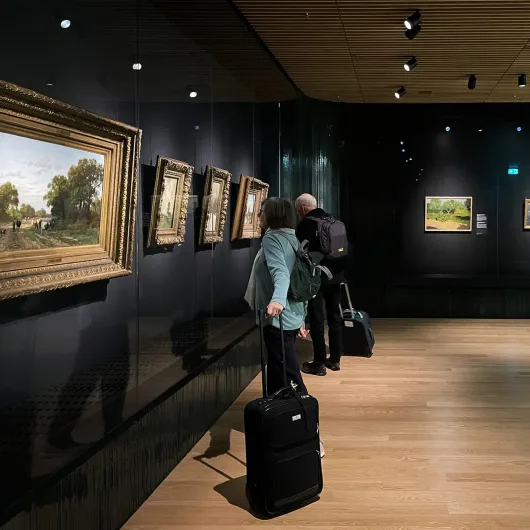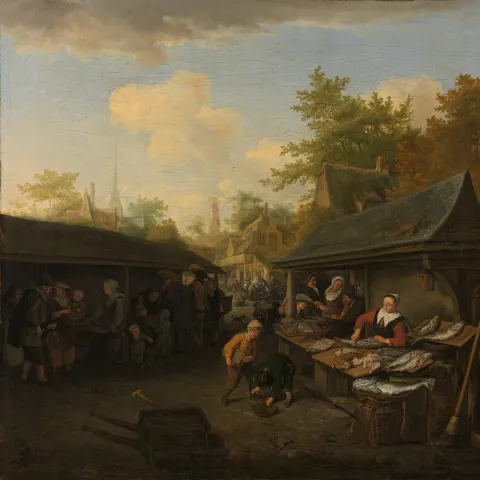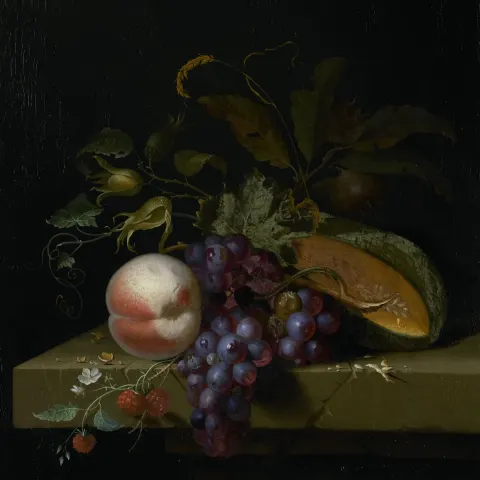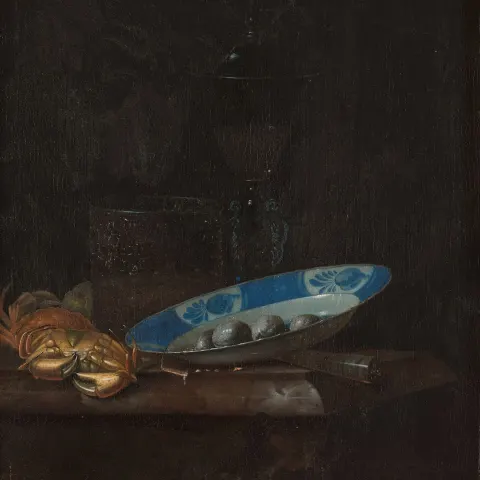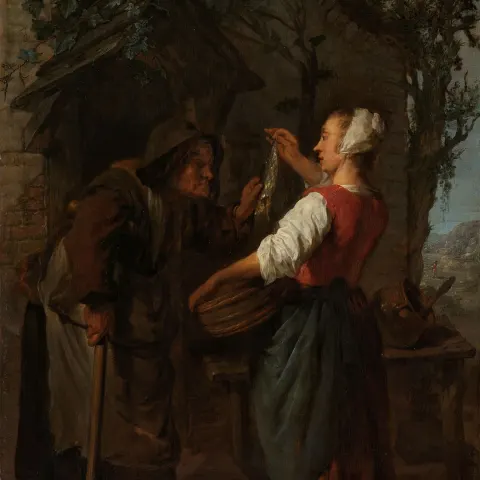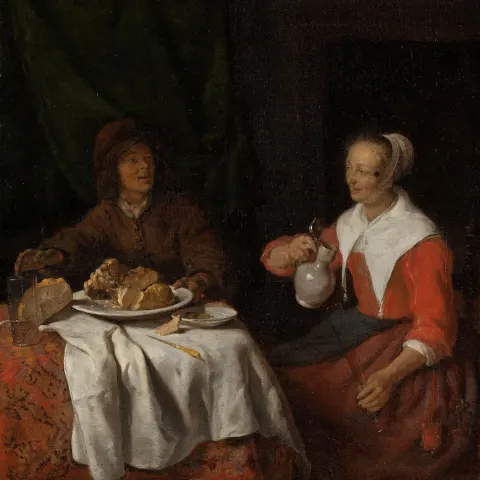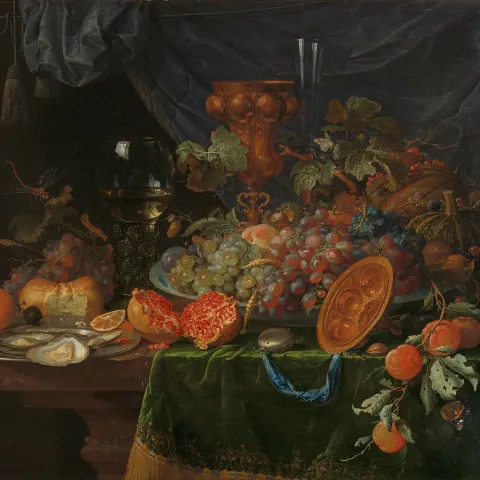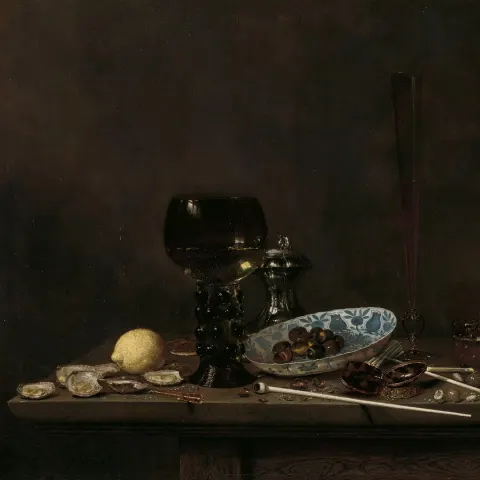In this exhibition, we are presenting a selection of paintings from the 17th century. These still lifes and scenes of daily life function like windows into the past and tell us about the dining and eating culture. Even though they present a distorted picture of reality, we can still learn a lot from them. What did people eat? Who sold the ingredients? And where did the food come from?
People from all over the world came together in the Netherlands. It was a hub for different cultures, products, and tastes. Trade with countries outside Europe grew. And this is reflected on the table. Chinese porcelain became a must-have for wealthy citizens when they set their tables. Local products were combined with foods from all over the world. Salt, pepper, and imported spices added flavour to meals.
